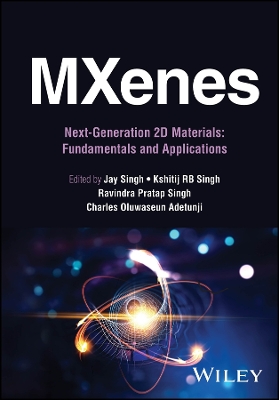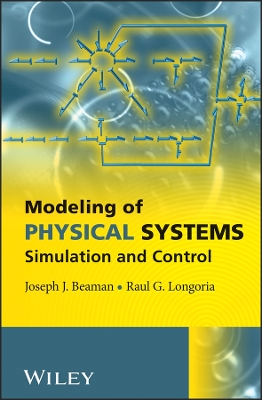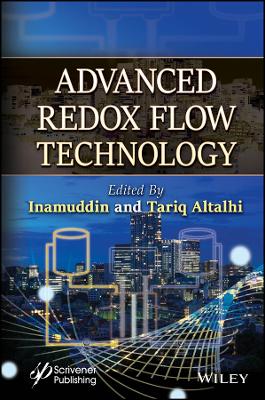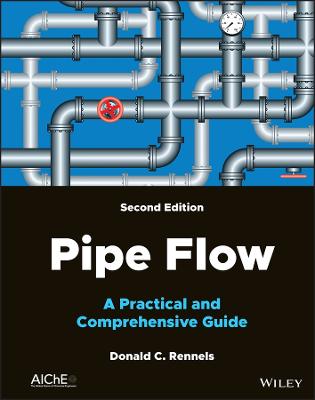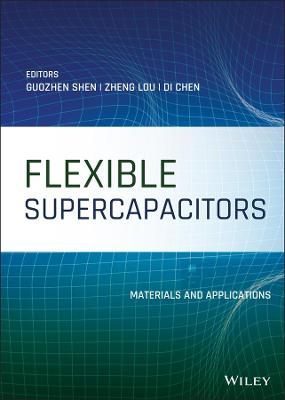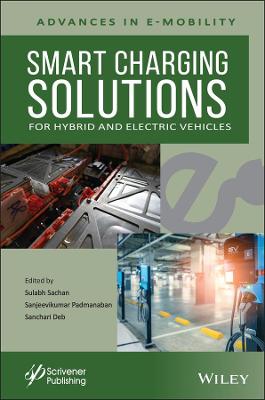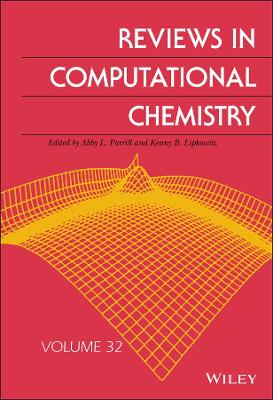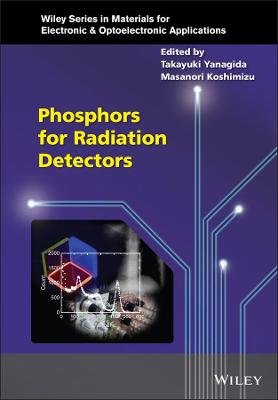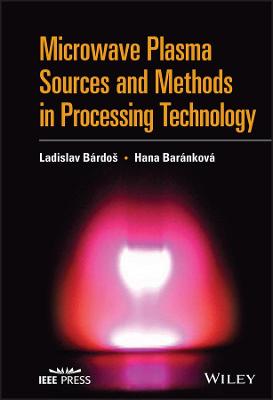Biorefinery Production Technologies for Chemicals and Energy
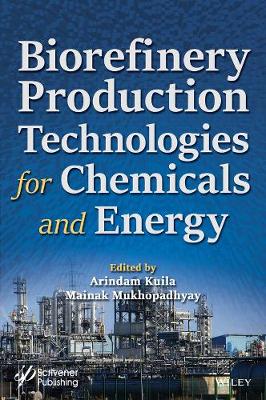 -15%
portes grátis
-15%
portes grátis
Biorefinery Production Technologies for Chemicals and Energy
Mukhopadhyay, Mainak; Kuila, Arindam
John Wiley and Sons Inc
11/2020
416
Dura
Inglês
9781119591429
15 a 20 dias
894
Part 1: Biorefinery Basic Principles 1
1 Principles of Sustainable Biorefinery 3
Samakshi Verma and Arindam Kuila
1.1 Introduction 3
1.2 Biorefinery 5
1.3 Conversion Technologies of Biorefineries 6
1.4 Some Outlooks Toward Biorefinery Technologies 7
1.5 Principles of Sustainable Biorefineries 9
1.6 Advantages of Biorefineries 10
1.7 Classification of Biorefineries 10
1.8 Conclusion 12
References 12
2 Sustainable Biorefinery Concept for Industrial Bioprocessing 15
Mohd Asyraf Kassim, Tan Kean Meng, Noor Aziah Serri, Siti Baidurah Yusoff, Nur Artikah Muhammad Shahrin, Khok Yong Seng, Mohamad Hafizi Abu Bakar and Lee Chee Keong
2.1 Sustainable Industrial Bioprocess 15
2.2 Biorefinery 16
2.2.1 Starch Biorefinery 18
2.2.2 Lignocellulosic Biorefinery 19
2.3 Microalgal Biorefinery 22
2.3.1 Upstream Processing 23
2.3.2 Downstream Processing 24
2.3.2.1 Lipid-Extracted Microalgae 24
2.4 Value Added Products 27
2.4.1 Biofuel 27
2.4.1.1 Bioethanol 30
2.4.1.2 Biobutanol 31
2.4.1.3 Biodiesel 34
2.4.1.4 Short Alkane 36
2.4.2 Polyhydroxyalkanoates (PHA) 36
2.4.3 Bioactive Compounds From Food Waste Residues 39
2.5 Novel Immobilize Carrier From Biowaste 42
2.5.1 Waste Cassava Tuber Fiber 42
2.5.2 Corn Silk 43
2.5.3 Sweet Sorghum Bagasse 43
2.5.4 Coconut Shell Activated Carbon 44
2.5.5 Sugar Beet Pulp 44
2.5.6 Eggshells 45
2.6 Conclusion 45
References 46
3 Biomass Resources for Biorefinery Application 55
Varsha Upadhayay, Ritika Joshi and Arindam Kuila
3.1 Introduction 55
3.2 Concept of Biorefinery 56
3.3 Biomass Feedstocks 57
3.3.1 Types of Biomass Feedstocks 57
3.3.1.1 Biomass of Sugar Industry 57
3.3.1.2 Biomass Waste 58
3.3.1.3 Sugar and Starch Biomass 59
3.3.1.4 Algal Biomass 59
3.3.1.5 Lignocelluloses Feedstock 59
3.3.1.6 Oil Crops for Biodiesel 60
3.4 Processes 60
3.4.1 Thermo Chemical Processes 62
3.4.2 Biochemical Processes 63
3.4.3 Biobased Products and the Biorefinery Concept 64
3.5 Conclusions 64
References 65
4 Evaluation of the Refinery Efficiency and Indicators for Sustainability and Economic Performance 67
Rituparna Saha and Mainak Mukhopadhyay
4.1 Introduction 67
4.2 Biofuels and Biorefineries: Sustainability Development and Economic Performance 69
4.3 Future Developments Required for Building a Sustainable Biorefinery System 72
4.4 Conclusion 72
References 73
5 Biorefinery: A Future Key of Potential Energy 77
Anirudha Paul, Sampad Ghosh, Saptarshi Konar and Anirban Ray
5.1 Introduction 77
5.2 Biorefinery: Definitions and Descriptions 78
5.3 Modus Operandi of Different Biorefineries 79
5.3.1 Thermochemical Processing 79
5.3.2 Mechanical Processing 79
5.3.3 Biochemical Processing 79
5.3.4 Chemical Processing 79
5.4 Types of Biorefineries 80
5.4.1 Lignocellulose Feedstock Biorefinery 80
5.4.2 Syngas Platform Biorefinery 81
5.4.3 Marine Biorefinery 81
5.4.4 Oleochemical Biorefinery 81
5.4.5 Green Biorefinery 81
5.4.6 Whole Crop Biorefinery 82
5.5 Some Biorefinery Industries 82
5.5.1 European Biorefinery Companies 82
5.5.2 Biorefinery Companies in USA 82
5.5.3 Biorefinery Companies in Asia 83
5.6 Conclusion and Future of Biorefinery 83
References 84
Part 2: Biorefinery for Production of Chemicals 89
6 Biorefinery for Innovative Production of Bioactive Compounds from Vegetable Biomass 91
Massimo Lucarini, Alessandra Durazzo, Ginevra Lombardi-Boccia, Annalisa Romani, Gianni Sagratini, Noemi Bevilacqua, Francesca Ieri, Pamela Vignolini, Margherita Campo and Francesca Cecchini
6.1 Introduction 91
6.2 Waste From Grape and During Vinification: Bioactive Compounds and Innovative Production 92
6.2.1 Grape 92
6.2.2 Polyphenols 92
6.2.3 Antioxidant Activity and Health Properties of Grape 94
6.2.4 Winemaking Technologies 96
6.2.5 Winemaking By-Products 96
6.2.6 Extraction Technologies 97
6.3 Waste from Olive and During Oil Production: Bioactive Compounds and Innovative Process 99
6.3.1 Olive Oil Quality, its Components, and Beneficial Properties 100
6.3.2 Olive Oil By-Products 108
6.3.3 Olive Oil, Tradition, Biodiversity, Territory, and Sustainability 113
6.4 Bioactive Compounds in Legume Residues 115
6.4.1 Polyphenols 116
6.4.2 Phytosterols and Squalene 116
6.4.3 Dietary Fiber and Resistant Starch 117
6.4.4 Soyasaponins 117
6.4.5 Bioactive Peptides 118
References 120
7 Prospects of Bacterial Tannase Catalyzed Biotransformation of Agro and Industrial Tannin Waste to High Value Gallic Acid 129
Sunny Dhiman and Gunjan Mukherjee
7.1 Introduction 129
7.2 Bacterial Tannase Producers 131
7.3 Bacterial Tannase Production 131
7.4 Hydrolyzable Tannins: A Substrate for Gallic Acid Production 133
7.5 Tannins as Waste 133
7.5.1 Agro-Waste 133
7.5.2 Industrial Waste 134
7.6 Bacterial Biotransformation of Tannins 134
7.7 Applications of Gallic Acid 136
7.7.1 Therapeutic Applications 136
7.7.2 Industrial Applications 137
7.8 Conclusions 138
References 138
8 Biorefinery Approach for Production of Industrially Important C4, C5, and C6 Chemicals 145
Shritoma Sengupta and Aparna Sen
8.1 Introduction 145
8.2 Role of Biorefinery in Industrially Important Chemical Production 147
8.3 Production of C4 Chemicals 149
8.4 Production of C5 Chemicals 152
8.5 Production of C6 Chemicals 155
8.6 Concluding Remarks 157
References 158
9 Value-Added Products from Guava Waste by Biorefinery Approach 163
Pranav D. Pathak, Sachin A. Mandavgane and Bhaskar D. Kulkarni
9.1 Introduction 163
9.2 Physicochemical Characterization 164
9.3 Valorization of GW 165
9.3.1 Medicinal Uses 165
9.3.1.1 GL, GB, and GF in Medicines 166
9.3.1.2 GP in Medicines 169
9.3.2 Extraction of Chemicals 171
9.3.2.1 Extraction from GL 171
9.3.2.2 Extraction from GP 176
9.3.2.3 Extraction from GS 176
9.3.3 Food Supplements 177
9.3.4 Extraction of Pectin 178
9.3.5 Animal Feed 178
9.3.6 As Insecticide 179
9.3.7 Synthesis of Nanomaterials 180
9.3.8 In Fermentations 180
9.3.9 As a Water Treatment Agent 181
9.3.10 Production of Enzymes 181
9.4 Sustainability of Value-Added Products From GW 181
9.5 Conclusion 189
References 189
10 Case-Studies Towards Sustainable Production of Value-Added Compounds in Agro-Industrial Wastes 197
Massimo Lucarini, Alessandra Durazzo, Ginevra Lombardi-Boccia, Annalisa Romani, Gianni Sagratini, Noemi Bevilacqua, Francesca Ieri, Pamela Vignolini, Margherita Campo and Francesca Cecchini
10.1 Introduction 197
10.2 Experimental Pilot Plant 199
10.2.1 Chestnut 199
10.2.2 Soy 204
10.2.3 Olive Oil By-Products Case Studies 213
10.2.3.1 Olive Oil Wastewater 213
10.2.3.2 Olea europaea L. leaves 214
References 216
11 Biorefining of Lignocellulosics for Production of Industrial Excipients of Varied Functionalities 221
UpadrastaLakshmishri Roy, DebabrataBera, Sreemoyee Chakraborty and Ronit Saha
11.1 Introduction 221
11.2 Structure and Composition 222
11.3 Lignocellulosic Residues: A Bioreserve for Fermentable Sugars and Polyphenols 222
11.3.1 Biorefining of Lignocellulosic Residues 223
11.4 Pre-Treatment of Lignocellulosics 224
11.4.1 Physico-Chemical Process 224
11.4.1.1 Acid Refining 224
11.4.1.2 Alcohol Refining 225
11.4.1.3 Alkali Refining 225
11.4.2 Thermo-Physical Process 226
11.4.2.1 Steam Explosion Process 226
11.4.2.2 Supercritical and Subcritical Water Treatment 226
11.4.2.3 Hot-Compressed Water Treatment 227
11.4.3 Biological Process 227
11.4.3.1 Lignin Degrading Enzymes 227
11.4.3.2 Cellulose Degrading Enzymes 229
11.4.3.3 Hemicellulose Degrading Enzymes 229
11.4.4 Phenols as By-Products of Lignocellulosic Pre-Treatment Process 230
11.5 Methods of Extraction of Polyphenols From Lignocellulosic Biomass 231
11.5.1 Solvent Affiliated Extraction 231
11.5.2 Enzyme Affiliated Extraction 231
11.5.3 Advanced Technological Methods Adopted for Recovery of Phenolics: (Pulsed-Electric-Field Pre-Treatment) 232
11.5.4 Catalytic Microwave Pyrolysis 233
11.5.5 Multifaceted Applications of Phenolics 233
11.6 Conclusion 235
References 235
12 Bioactive Compounds Production from Vegetable Biomass: A Biorefinery Approach 241
Shritoma Sengupta, Debalina Bhattacharya and Mainak Mukhopadhyay
12.1 Introduction 241
12.2 Production of Bioactive Compounds 243
12.3 Bioactive Compounds From Vegetable Biomass 246
12.4 Role of Biorefinery in Production of Bioactive Compounds 248
12.5 Concluding Remarks 252
References 253
Part 3: Biorefinery for Production of Alternative Fuel and Energy 259
13 Potential Raw Materials and Production Technologies for Biorefineries 261
Shilpi Bansal, Lokesh Kumar Narnoliya and Ankit Sonthalia
13.1 Introduction 261
13.2 Bioresources 264
13.2.1 First-Generation Feedstock 264
13.2.2 Second-Generation Feedstock 264
13.2.3 Third-Generation Feedstock 270
13.3 Chemicals Produced from Biomass 270
13.3.1 Ethylene 270
13.3.2 Propylene 273
13.3.3 Propylene Glycol 273
13.3.4 Butadiene 274
13.3.5 2,3-Butanediol and 2-Butanone Methyl Ethyl Ketone (MEK) 274
13.3.6 Acrylic Acid 274
13.3.7 Aromatic Compounds 275
13.4 Production Technologies 275
13.4.1 Pre-Treatment 275
13.4.2 Hydrolysis 276
13.4.3 Fermentation 277
13.4.4 Pyrolysis 278
13.4.5 Gasification 278
13.4.6 Supercritical Water 279
13.4.7 Algae Biomass 280
13.5 Conclusion 280
References 281
14 Sustainable Production of Biofuels Through Synthetic Biology Approach 289
Dulam Sandhya, Phanikanth Jogam, Lokesh Kumar Narnoliya, Archana Srivastava and Jyoti Singh Jadaun
14.1 Introduction 289
14.2 Types of Biofuel 291
14.2.1 First-Generation Biofuels (Conventional Biofuels) 291
14.2.1.1 Biogas 291
14.2.1.2 Biodiesel and Bioethanol 291
14.2.2 Second-Generation Biofuels 292
14.2.2.1 Cellulosic Ethanol 293
14.2.2.2 Biomethanol 293
14.2.2.3 Dimethylformamide 293
14.2.3 Third-Generation Biofuels 293
14.2.4 Fourth-Generation Biofuels 293
14.2.5 Advantages of Biofuels 294
14.2.6 Disadvantages of Biofuels 294
14.3 Sources of Biofuel 294
14.3.1 Bacterial Source 294
14.3.2 Algal Source 296
14.3.3 Fungal Source 296
14.3.4 Plant Source 297
14.3.4.1 Plant Materials Utilized for the Production of Biofuels 298
14.3.5 Animal Source 299
14.4 Possible Routes of Biofuel Production Through Synthetic Biology 299
14.4.1 Metabolic Engineering 299
14.4.2 Tissue Culture/Genetic Engineering 300
14.4.3 CRISPR-Cas 300
14.5 Synthetic Biology and Its Application for Biofuels Production 301
14.5.1 Case Study 1: Production of Isobutanol by Engineered Saccharomyces cerevisiae 301
14.5.2 Case Study 2: Generation of Biofuel From Ionic Liquid Pretreated Plant Biomass Using Engineered E. coli 302
14.5.3 Case Study 3: CRISPRi-Mediated Metabolic Pathway Modulation for Isopentenol Production in E. coli 302
14.6 Current Status of Biofuel 302
14.7 Future Aspects 303
14.8 Conclusion 304
References 304
15 Biorefinery Approach for Bioethanol Production 313
Rituparna Saha, Debalina Bhattacharya and Mainak Mukhopadhyay
15.1 Introduction 313
15.2 Bioethanol 315
15.3 Classification of Biorefineries 315
15.3.1 Agricultural Biorefinery 316
15.3.2 Lignocellulosic Biorefinery 317
15.4 Types of Pre-Treatments 318
15.4.1 Physical Pre-Treatments 318
15.4.2 Chemical Pre-Treatments 319
15.4.3 Physico-Chemical Pre-Treatments 320
15.4.4 Biological Pre-Treatments 321
15.5 Enzymatic Hydrolysis of Biomass 323
15.6 Fermentation 324
15.7 Future Prospects for the Production of Bioethanol Through Biorefineries 325
15.8 Conclusion 326
References 326
16 Biorefinery Approach for Production of Biofuel From Algal Biomass 335
Bhasati Uzir and Amrita Saha
16.1 Introduction 335
16.2 Algal Biomass: The Third-Generation Biofuel 336
16.2.1 Algae as a Raw Material for Biofuels Production 338
16.2.2 Algae as Best Feedstock for Biorefinery 339
16.3 Microalgal Biomass Cultivation/Production 340
16.3.1 Open Pond Production 341
16.3.2 Closed Bioreactors/Enclosed PBRs 341
16.3.3 Hybrid Systems 341
16.4 Strain Selection and Microalgae Genetic Engineering Method Strain Selection Process for Biorefining of Microalgae 342
16.5 Harvesting Methods 343
16.6 Cellular Disruption 343
16.7 Extraction 344
16.8 Conclusion 344
References 344
17 Biogas Production and Uses 347
Anirudha Paul, Saptarshi Konar, Sampad Ghosh and Anirban Ray
17.1 Introduction 347
17.2 Potential Use of Biogas 348
17.2.1 Anarobic Digestion 348
17.2.2 Biogas from Energy Crops and Straw 349
17.2.3 Biogas from Fish Waste 349
17.2.4 Biogas from Food Waste 349
17.2.5 Biogas from Sewage Sludge 350
17.2.6 Biogas from Algae 350
17.2.7 Some Biogas Biorefinery 350
17.3 Pre-Treatment 350
17.3.1 Physical Pre-Treatment 350
17.3.2 Physiochemical Pre-Treatment 351
17.3.3 Chemical Pre-Treatment 351
17.3.4 Biological Pre-Treatment 351
17.4 Process and Technology 351
17.5 Biogas Purification and Upgradation 352
17.5.1 Removal of CO2 352
17.5.2 Removal of H2S 353
17.5.3 Removal of Water 353
17.6 Conclusion 353
References 353
18 Use of Different Enzymes in Biorefinery Systems 357
A.N. Anoopkumar, Sharrel Rebello, Embalil Mathachan Aneesh, Raveendran Sindhu, Parameswaran Binod, Ashok Pandey and Edgard Gnansounou
18.1 Introduction 357
18.2 Perspectives of the Biorefinery Concept 360
18.3 Starch Degradation 361
18.4 Biodegradation and Modification of Lignocellulose and Hemicellulose 361
18.5 Conversion of Pectins 363
18.6 Microbial Fermentation and Biofuel and Biodiesel Aimed Biorefinery 363
18.7 Conclusion 365
Acknowledgement 365
References 365
Part 4: Conclusion 369
19 Wheat Straw Valorization: Material Balance and Biorefinery Approach 371
Sachin A. Mandavgane and Bhaskar D. Kulkarni
19.1 Introduction 371
19.2 Wax Extraction Process 372
19.3 Combustion Process 373
19.4 Mass Balance for Combustion 375
19.5 Pyrolysis of Wheat Straw 376
19.6 Mass Balance of Pyrolysis 377
19.7 Separation of Valuable Chemicals From Bio-Oil 377
19.8 Production of Biodeisel From Wheat Straw 378
19.9 Conclusion 380
Acknowledgment 381
References 381
Index 383
Part 1: Biorefinery Basic Principles 1
1 Principles of Sustainable Biorefinery 3
Samakshi Verma and Arindam Kuila
1.1 Introduction 3
1.2 Biorefinery 5
1.3 Conversion Technologies of Biorefineries 6
1.4 Some Outlooks Toward Biorefinery Technologies 7
1.5 Principles of Sustainable Biorefineries 9
1.6 Advantages of Biorefineries 10
1.7 Classification of Biorefineries 10
1.8 Conclusion 12
References 12
2 Sustainable Biorefinery Concept for Industrial Bioprocessing 15
Mohd Asyraf Kassim, Tan Kean Meng, Noor Aziah Serri, Siti Baidurah Yusoff, Nur Artikah Muhammad Shahrin, Khok Yong Seng, Mohamad Hafizi Abu Bakar and Lee Chee Keong
2.1 Sustainable Industrial Bioprocess 15
2.2 Biorefinery 16
2.2.1 Starch Biorefinery 18
2.2.2 Lignocellulosic Biorefinery 19
2.3 Microalgal Biorefinery 22
2.3.1 Upstream Processing 23
2.3.2 Downstream Processing 24
2.3.2.1 Lipid-Extracted Microalgae 24
2.4 Value Added Products 27
2.4.1 Biofuel 27
2.4.1.1 Bioethanol 30
2.4.1.2 Biobutanol 31
2.4.1.3 Biodiesel 34
2.4.1.4 Short Alkane 36
2.4.2 Polyhydroxyalkanoates (PHA) 36
2.4.3 Bioactive Compounds From Food Waste Residues 39
2.5 Novel Immobilize Carrier From Biowaste 42
2.5.1 Waste Cassava Tuber Fiber 42
2.5.2 Corn Silk 43
2.5.3 Sweet Sorghum Bagasse 43
2.5.4 Coconut Shell Activated Carbon 44
2.5.5 Sugar Beet Pulp 44
2.5.6 Eggshells 45
2.6 Conclusion 45
References 46
3 Biomass Resources for Biorefinery Application 55
Varsha Upadhayay, Ritika Joshi and Arindam Kuila
3.1 Introduction 55
3.2 Concept of Biorefinery 56
3.3 Biomass Feedstocks 57
3.3.1 Types of Biomass Feedstocks 57
3.3.1.1 Biomass of Sugar Industry 57
3.3.1.2 Biomass Waste 58
3.3.1.3 Sugar and Starch Biomass 59
3.3.1.4 Algal Biomass 59
3.3.1.5 Lignocelluloses Feedstock 59
3.3.1.6 Oil Crops for Biodiesel 60
3.4 Processes 60
3.4.1 Thermo Chemical Processes 62
3.4.2 Biochemical Processes 63
3.4.3 Biobased Products and the Biorefinery Concept 64
3.5 Conclusions 64
References 65
4 Evaluation of the Refinery Efficiency and Indicators for Sustainability and Economic Performance 67
Rituparna Saha and Mainak Mukhopadhyay
4.1 Introduction 67
4.2 Biofuels and Biorefineries: Sustainability Development and Economic Performance 69
4.3 Future Developments Required for Building a Sustainable Biorefinery System 72
4.4 Conclusion 72
References 73
5 Biorefinery: A Future Key of Potential Energy 77
Anirudha Paul, Sampad Ghosh, Saptarshi Konar and Anirban Ray
5.1 Introduction 77
5.2 Biorefinery: Definitions and Descriptions 78
5.3 Modus Operandi of Different Biorefineries 79
5.3.1 Thermochemical Processing 79
5.3.2 Mechanical Processing 79
5.3.3 Biochemical Processing 79
5.3.4 Chemical Processing 79
5.4 Types of Biorefineries 80
5.4.1 Lignocellulose Feedstock Biorefinery 80
5.4.2 Syngas Platform Biorefinery 81
5.4.3 Marine Biorefinery 81
5.4.4 Oleochemical Biorefinery 81
5.4.5 Green Biorefinery 81
5.4.6 Whole Crop Biorefinery 82
5.5 Some Biorefinery Industries 82
5.5.1 European Biorefinery Companies 82
5.5.2 Biorefinery Companies in USA 82
5.5.3 Biorefinery Companies in Asia 83
5.6 Conclusion and Future of Biorefinery 83
References 84
Part 2: Biorefinery for Production of Chemicals 89
6 Biorefinery for Innovative Production of Bioactive Compounds from Vegetable Biomass 91
Massimo Lucarini, Alessandra Durazzo, Ginevra Lombardi-Boccia, Annalisa Romani, Gianni Sagratini, Noemi Bevilacqua, Francesca Ieri, Pamela Vignolini, Margherita Campo and Francesca Cecchini
6.1 Introduction 91
6.2 Waste From Grape and During Vinification: Bioactive Compounds and Innovative Production 92
6.2.1 Grape 92
6.2.2 Polyphenols 92
6.2.3 Antioxidant Activity and Health Properties of Grape 94
6.2.4 Winemaking Technologies 96
6.2.5 Winemaking By-Products 96
6.2.6 Extraction Technologies 97
6.3 Waste from Olive and During Oil Production: Bioactive Compounds and Innovative Process 99
6.3.1 Olive Oil Quality, its Components, and Beneficial Properties 100
6.3.2 Olive Oil By-Products 108
6.3.3 Olive Oil, Tradition, Biodiversity, Territory, and Sustainability 113
6.4 Bioactive Compounds in Legume Residues 115
6.4.1 Polyphenols 116
6.4.2 Phytosterols and Squalene 116
6.4.3 Dietary Fiber and Resistant Starch 117
6.4.4 Soyasaponins 117
6.4.5 Bioactive Peptides 118
References 120
7 Prospects of Bacterial Tannase Catalyzed Biotransformation of Agro and Industrial Tannin Waste to High Value Gallic Acid 129
Sunny Dhiman and Gunjan Mukherjee
7.1 Introduction 129
7.2 Bacterial Tannase Producers 131
7.3 Bacterial Tannase Production 131
7.4 Hydrolyzable Tannins: A Substrate for Gallic Acid Production 133
7.5 Tannins as Waste 133
7.5.1 Agro-Waste 133
7.5.2 Industrial Waste 134
7.6 Bacterial Biotransformation of Tannins 134
7.7 Applications of Gallic Acid 136
7.7.1 Therapeutic Applications 136
7.7.2 Industrial Applications 137
7.8 Conclusions 138
References 138
8 Biorefinery Approach for Production of Industrially Important C4, C5, and C6 Chemicals 145
Shritoma Sengupta and Aparna Sen
8.1 Introduction 145
8.2 Role of Biorefinery in Industrially Important Chemical Production 147
8.3 Production of C4 Chemicals 149
8.4 Production of C5 Chemicals 152
8.5 Production of C6 Chemicals 155
8.6 Concluding Remarks 157
References 158
9 Value-Added Products from Guava Waste by Biorefinery Approach 163
Pranav D. Pathak, Sachin A. Mandavgane and Bhaskar D. Kulkarni
9.1 Introduction 163
9.2 Physicochemical Characterization 164
9.3 Valorization of GW 165
9.3.1 Medicinal Uses 165
9.3.1.1 GL, GB, and GF in Medicines 166
9.3.1.2 GP in Medicines 169
9.3.2 Extraction of Chemicals 171
9.3.2.1 Extraction from GL 171
9.3.2.2 Extraction from GP 176
9.3.2.3 Extraction from GS 176
9.3.3 Food Supplements 177
9.3.4 Extraction of Pectin 178
9.3.5 Animal Feed 178
9.3.6 As Insecticide 179
9.3.7 Synthesis of Nanomaterials 180
9.3.8 In Fermentations 180
9.3.9 As a Water Treatment Agent 181
9.3.10 Production of Enzymes 181
9.4 Sustainability of Value-Added Products From GW 181
9.5 Conclusion 189
References 189
10 Case-Studies Towards Sustainable Production of Value-Added Compounds in Agro-Industrial Wastes 197
Massimo Lucarini, Alessandra Durazzo, Ginevra Lombardi-Boccia, Annalisa Romani, Gianni Sagratini, Noemi Bevilacqua, Francesca Ieri, Pamela Vignolini, Margherita Campo and Francesca Cecchini
10.1 Introduction 197
10.2 Experimental Pilot Plant 199
10.2.1 Chestnut 199
10.2.2 Soy 204
10.2.3 Olive Oil By-Products Case Studies 213
10.2.3.1 Olive Oil Wastewater 213
10.2.3.2 Olea europaea L. leaves 214
References 216
11 Biorefining of Lignocellulosics for Production of Industrial Excipients of Varied Functionalities 221
UpadrastaLakshmishri Roy, DebabrataBera, Sreemoyee Chakraborty and Ronit Saha
11.1 Introduction 221
11.2 Structure and Composition 222
11.3 Lignocellulosic Residues: A Bioreserve for Fermentable Sugars and Polyphenols 222
11.3.1 Biorefining of Lignocellulosic Residues 223
11.4 Pre-Treatment of Lignocellulosics 224
11.4.1 Physico-Chemical Process 224
11.4.1.1 Acid Refining 224
11.4.1.2 Alcohol Refining 225
11.4.1.3 Alkali Refining 225
11.4.2 Thermo-Physical Process 226
11.4.2.1 Steam Explosion Process 226
11.4.2.2 Supercritical and Subcritical Water Treatment 226
11.4.2.3 Hot-Compressed Water Treatment 227
11.4.3 Biological Process 227
11.4.3.1 Lignin Degrading Enzymes 227
11.4.3.2 Cellulose Degrading Enzymes 229
11.4.3.3 Hemicellulose Degrading Enzymes 229
11.4.4 Phenols as By-Products of Lignocellulosic Pre-Treatment Process 230
11.5 Methods of Extraction of Polyphenols From Lignocellulosic Biomass 231
11.5.1 Solvent Affiliated Extraction 231
11.5.2 Enzyme Affiliated Extraction 231
11.5.3 Advanced Technological Methods Adopted for Recovery of Phenolics: (Pulsed-Electric-Field Pre-Treatment) 232
11.5.4 Catalytic Microwave Pyrolysis 233
11.5.5 Multifaceted Applications of Phenolics 233
11.6 Conclusion 235
References 235
12 Bioactive Compounds Production from Vegetable Biomass: A Biorefinery Approach 241
Shritoma Sengupta, Debalina Bhattacharya and Mainak Mukhopadhyay
12.1 Introduction 241
12.2 Production of Bioactive Compounds 243
12.3 Bioactive Compounds From Vegetable Biomass 246
12.4 Role of Biorefinery in Production of Bioactive Compounds 248
12.5 Concluding Remarks 252
References 253
Part 3: Biorefinery for Production of Alternative Fuel and Energy 259
13 Potential Raw Materials and Production Technologies for Biorefineries 261
Shilpi Bansal, Lokesh Kumar Narnoliya and Ankit Sonthalia
13.1 Introduction 261
13.2 Bioresources 264
13.2.1 First-Generation Feedstock 264
13.2.2 Second-Generation Feedstock 264
13.2.3 Third-Generation Feedstock 270
13.3 Chemicals Produced from Biomass 270
13.3.1 Ethylene 270
13.3.2 Propylene 273
13.3.3 Propylene Glycol 273
13.3.4 Butadiene 274
13.3.5 2,3-Butanediol and 2-Butanone Methyl Ethyl Ketone (MEK) 274
13.3.6 Acrylic Acid 274
13.3.7 Aromatic Compounds 275
13.4 Production Technologies 275
13.4.1 Pre-Treatment 275
13.4.2 Hydrolysis 276
13.4.3 Fermentation 277
13.4.4 Pyrolysis 278
13.4.5 Gasification 278
13.4.6 Supercritical Water 279
13.4.7 Algae Biomass 280
13.5 Conclusion 280
References 281
14 Sustainable Production of Biofuels Through Synthetic Biology Approach 289
Dulam Sandhya, Phanikanth Jogam, Lokesh Kumar Narnoliya, Archana Srivastava and Jyoti Singh Jadaun
14.1 Introduction 289
14.2 Types of Biofuel 291
14.2.1 First-Generation Biofuels (Conventional Biofuels) 291
14.2.1.1 Biogas 291
14.2.1.2 Biodiesel and Bioethanol 291
14.2.2 Second-Generation Biofuels 292
14.2.2.1 Cellulosic Ethanol 293
14.2.2.2 Biomethanol 293
14.2.2.3 Dimethylformamide 293
14.2.3 Third-Generation Biofuels 293
14.2.4 Fourth-Generation Biofuels 293
14.2.5 Advantages of Biofuels 294
14.2.6 Disadvantages of Biofuels 294
14.3 Sources of Biofuel 294
14.3.1 Bacterial Source 294
14.3.2 Algal Source 296
14.3.3 Fungal Source 296
14.3.4 Plant Source 297
14.3.4.1 Plant Materials Utilized for the Production of Biofuels 298
14.3.5 Animal Source 299
14.4 Possible Routes of Biofuel Production Through Synthetic Biology 299
14.4.1 Metabolic Engineering 299
14.4.2 Tissue Culture/Genetic Engineering 300
14.4.3 CRISPR-Cas 300
14.5 Synthetic Biology and Its Application for Biofuels Production 301
14.5.1 Case Study 1: Production of Isobutanol by Engineered Saccharomyces cerevisiae 301
14.5.2 Case Study 2: Generation of Biofuel From Ionic Liquid Pretreated Plant Biomass Using Engineered E. coli 302
14.5.3 Case Study 3: CRISPRi-Mediated Metabolic Pathway Modulation for Isopentenol Production in E. coli 302
14.6 Current Status of Biofuel 302
14.7 Future Aspects 303
14.8 Conclusion 304
References 304
15 Biorefinery Approach for Bioethanol Production 313
Rituparna Saha, Debalina Bhattacharya and Mainak Mukhopadhyay
15.1 Introduction 313
15.2 Bioethanol 315
15.3 Classification of Biorefineries 315
15.3.1 Agricultural Biorefinery 316
15.3.2 Lignocellulosic Biorefinery 317
15.4 Types of Pre-Treatments 318
15.4.1 Physical Pre-Treatments 318
15.4.2 Chemical Pre-Treatments 319
15.4.3 Physico-Chemical Pre-Treatments 320
15.4.4 Biological Pre-Treatments 321
15.5 Enzymatic Hydrolysis of Biomass 323
15.6 Fermentation 324
15.7 Future Prospects for the Production of Bioethanol Through Biorefineries 325
15.8 Conclusion 326
References 326
16 Biorefinery Approach for Production of Biofuel From Algal Biomass 335
Bhasati Uzir and Amrita Saha
16.1 Introduction 335
16.2 Algal Biomass: The Third-Generation Biofuel 336
16.2.1 Algae as a Raw Material for Biofuels Production 338
16.2.2 Algae as Best Feedstock for Biorefinery 339
16.3 Microalgal Biomass Cultivation/Production 340
16.3.1 Open Pond Production 341
16.3.2 Closed Bioreactors/Enclosed PBRs 341
16.3.3 Hybrid Systems 341
16.4 Strain Selection and Microalgae Genetic Engineering Method Strain Selection Process for Biorefining of Microalgae 342
16.5 Harvesting Methods 343
16.6 Cellular Disruption 343
16.7 Extraction 344
16.8 Conclusion 344
References 344
17 Biogas Production and Uses 347
Anirudha Paul, Saptarshi Konar, Sampad Ghosh and Anirban Ray
17.1 Introduction 347
17.2 Potential Use of Biogas 348
17.2.1 Anarobic Digestion 348
17.2.2 Biogas from Energy Crops and Straw 349
17.2.3 Biogas from Fish Waste 349
17.2.4 Biogas from Food Waste 349
17.2.5 Biogas from Sewage Sludge 350
17.2.6 Biogas from Algae 350
17.2.7 Some Biogas Biorefinery 350
17.3 Pre-Treatment 350
17.3.1 Physical Pre-Treatment 350
17.3.2 Physiochemical Pre-Treatment 351
17.3.3 Chemical Pre-Treatment 351
17.3.4 Biological Pre-Treatment 351
17.4 Process and Technology 351
17.5 Biogas Purification and Upgradation 352
17.5.1 Removal of CO2 352
17.5.2 Removal of H2S 353
17.5.3 Removal of Water 353
17.6 Conclusion 353
References 353
18 Use of Different Enzymes in Biorefinery Systems 357
A.N. Anoopkumar, Sharrel Rebello, Embalil Mathachan Aneesh, Raveendran Sindhu, Parameswaran Binod, Ashok Pandey and Edgard Gnansounou
18.1 Introduction 357
18.2 Perspectives of the Biorefinery Concept 360
18.3 Starch Degradation 361
18.4 Biodegradation and Modification of Lignocellulose and Hemicellulose 361
18.5 Conversion of Pectins 363
18.6 Microbial Fermentation and Biofuel and Biodiesel Aimed Biorefinery 363
18.7 Conclusion 365
Acknowledgement 365
References 365
Part 4: Conclusion 369
19 Wheat Straw Valorization: Material Balance and Biorefinery Approach 371
Sachin A. Mandavgane and Bhaskar D. Kulkarni
19.1 Introduction 371
19.2 Wax Extraction Process 372
19.3 Combustion Process 373
19.4 Mass Balance for Combustion 375
19.5 Pyrolysis of Wheat Straw 376
19.6 Mass Balance of Pyrolysis 377
19.7 Separation of Valuable Chemicals From Bio-Oil 377
19.8 Production of Biodeisel From Wheat Straw 378
19.9 Conclusion 380
Acknowledgment 381
References 381
Index 383

